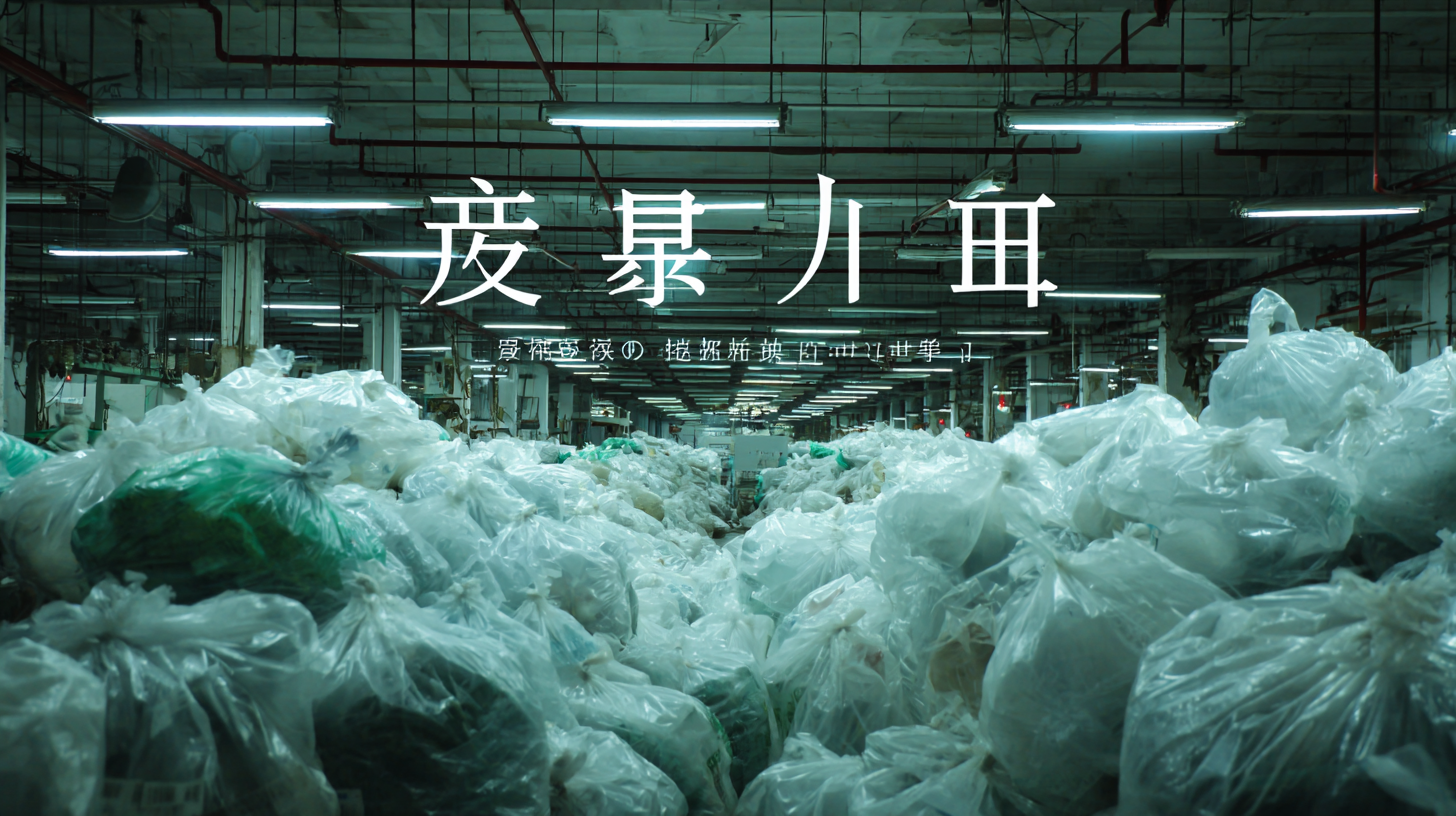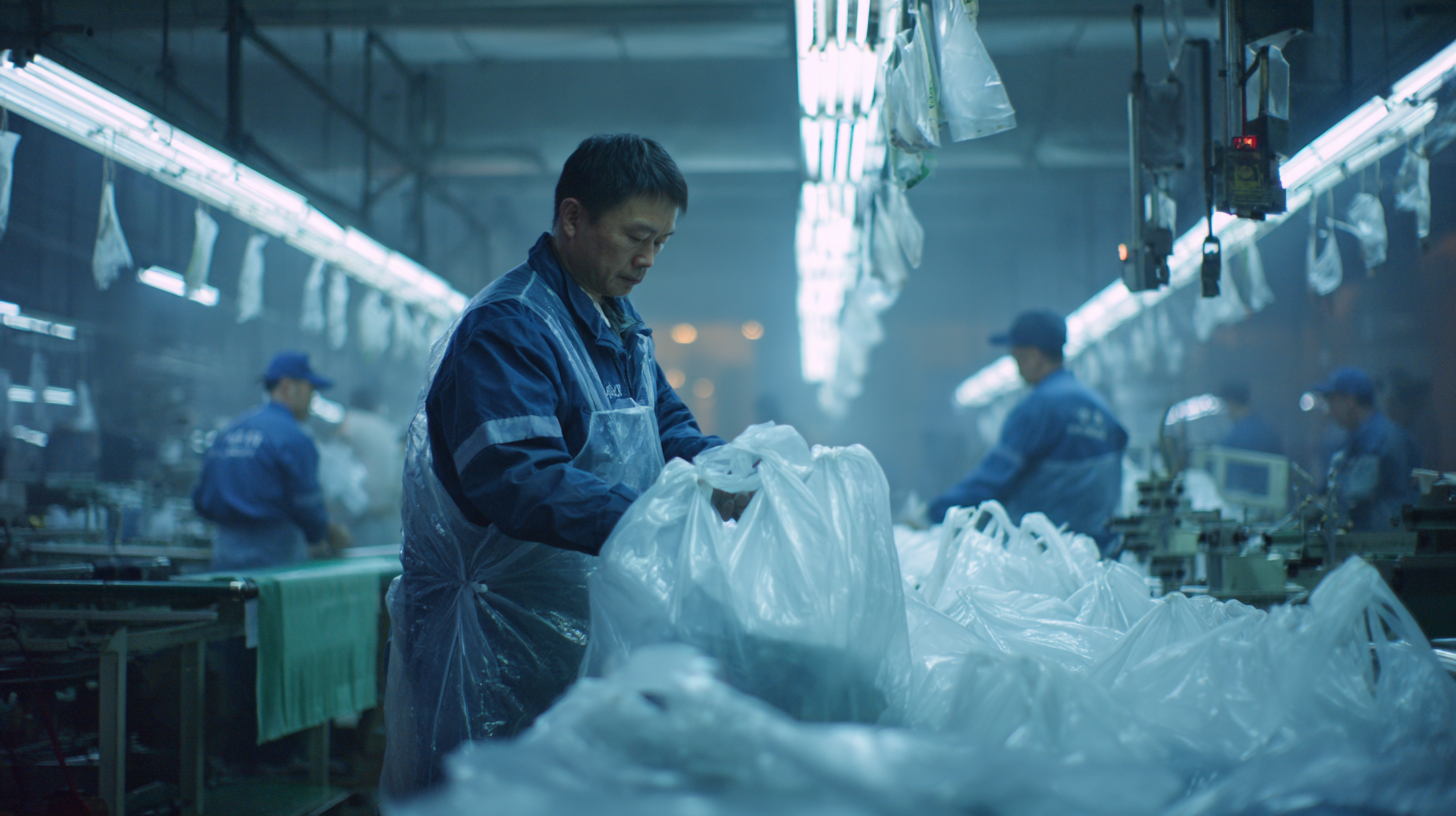- Phone:+86 15218629499
- Phone: +86 15766990063
- E-mail: Yzprinting01@163.com
In the ever-evolving landscape of global manufacturing, Chinese manufacturers have emerged as leaders, particularly in the production of plastic bags. According to a report by Grand View Research, the global market size for plastic bags is projected to reach USD 30.7 billion by 2025, with a significant portion attributed to the high demand for versatile, eco-friendly, and cost-effective packaging solutions. As businesses increasingly prioritize sustainability, the demand for products like the "Bag of Plastic" is witnessing unprecedented growth. This blog will explore the factors that position Chinese manufacturing as the top choice for plastic bags, focusing on quality, innovation, and striving for excellence in an industry that is continuously adapting to consumer preferences and regulatory changes.

The global demand for plastic bags is set to rise significantly, driven by the expanding consumer base for fast-moving consumer goods. By 2025, the market for global fast-moving consumer goods packaging is projected to reach a staggering $719.90 billion, reflecting an upward trend that indicates strong growth into the next decade. This burgeoning demand does not just point to a need for plastic bags but also emphasizes the importance of sustainable practices within the manufacturing sector.
As environmental concerns escalate, the focus on recyclable and biodegradable materials has intensified. The global recycled materials packaging market is projected to grow from $189.9 billion in 2024, with a compound annual growth rate of 5.4% anticipated between 2025 and 2034. This shift towards sustainable packaging solutions highlights a significant opportunity for manufacturers to innovate and adapt their products.
The bioplastics market, for instance, is expected to soar, increasing from $16.94 billion in 2024 to become a major player in the global packaging landscape by 2037. As consumers become more discerning, manufacturers must champion excellence in their production methods to meet the growing demand for environmentally friendly products.
In recent years, Chinese manufacturing has emerged as a leader in the production of plastic bags, leveraging innovative techniques that significantly enhance quality and sustainability. The implementation of advanced manufacturing processes, such as automation and precision engineering, has led to a remarkable increase in efficiency. According to a report by the China Plastic Products Association, the country's plastic bag production volume reached approximately 7.5 million tons in 2022, reflecting a compound annual growth rate of 5% over the last five years.
Moreover, the integration of eco-friendly materials and recycling technologies has set a new standard in the industry. The use of biodegradable polymers and fully recyclable materials has not only improved environmental compliance but also appealed to the increasingly conscious consumer market. As highlighted in a recent study by Markets and Markets, the global biodegradable bags market is expected to grow from $1.6 billion in 2023 to $3.9 billion by 2027, with China playing a pivotal role in this expansion through its commitment to innovative manufacturing practices. Such advancements position Chinese plastic bag manufacturers at the forefront of the industry, ensuring that quality and sustainability go hand in hand.

As we approach 2025, sustainability trends are rapidly reshaping the landscape of plastic bag manufacturing in China. With increased regulatory scrutiny and consumer demand for eco-friendly products, manufacturers are adopting innovative practices to reduce environmental impact. Recycled materials are becoming a staple in production, and biodegradable options are gaining traction. By prioritizing sustainability, manufacturers not only adhere to regulations but also enhance their competitive edge in a market that increasingly favors eco-conscious choices.

Tips for Manufacturers:
Aligning business practices with sustainability trends not only supports the environment but also positions manufacturers as leaders in a changing market. Staying informed about consumer preferences and emerging technologies will be essential for thriving in this evolving landscape.
Championing excellence in Chinese manufacturing, especially in the plastic bag industry, underscores a critical shift in market dynamics. The Chinese plastic bag market continues to thrive, driven by increasing consumer demand and robust manufacturing capabilities. Recent analyses reveal that the global plastic container market is projected to grow significantly, with expectations of reaching substantial market sizes by 2037. The growth is largely fueled by the need for diverse packaging solutions across different sectors, including food and beverages, which currently dominate a significant share of the packaging industry.
In the broader context of packaging, the fast-moving consumer goods (FMCG) packaging segment is anticipated to witness impressive growth, with industry reports indicating a substantial increase in market size and share by 2032. Notably, biodegradable plastic and paper bags are gaining traction, reflecting a critical shift towards sustainable practices in manufacturing. The market size for biodegradable bags is set to expand further, projected to incorporate various materials such as polylactic acid (PLA) and starch blends. With major players continuously innovating and adapting to regulatory changes, the industry landscape is evolving rapidly, reinforcing China's position as a leading competitor in the global plastic bag market.
| Company Type | Estimated Market Share (%) | Production Capacity (Tons/Year) | Main Product Types |
|---|---|---|---|
| Large Manufacturer | 35% | 50000 | Heavy-duty Bags, Biodegradable Bags |
| Medium Manufacturer | 25% | 30000 | Custom Printed Bags, Shopping Bags |
| Small Manufacturer | 15% | 15000 | Grocery Bags, Specialty Bags |
| Start-up Company | 10% | 5000 | Recyclable Bags, Eco-friendly Bags |
| Import/Export Company | 15% | 20000 | Bulk Bags, Industrial Bags |
The projected economic impact of digital transformation on plastic bag production by 2025 could serve as a pivotal moment for the industry. As the world grapples with increasing concerns over plastic waste, particularly in sectors such as fashion and consumer goods, digital technologies are set to revolutionize production processes. By embracing automation and data-driven decision-making, manufacturers can enhance efficiency, reduce waste, and ultimately contribute to a more sustainable approach to plastic bag production.
Moreover, this transformation is essential in addressing the broader challenges posed by plastic pollution. With approximately 16.16 million tonnes of plastic packaging waste generated in the EU alone in 2022, the push towards smart manufacturing coupled with reusable packaging models is critical. By 2025, there is a significant opportunity for the industry to adopt a zero-waste circular economy model that not only mitigates environmental impact but also drives economic growth through innovative practices. The focus will not only be on improving recyclability but also on redesigning products for longevity and reuse, reinforcing the industry's commitment to sustainability.
This chart illustrates the anticipated economic impacts from the adoption of digital transformation technologies in the plastic bag manufacturing industry by 2025. The data showcases the projected changes in production efficiency and cost savings.
